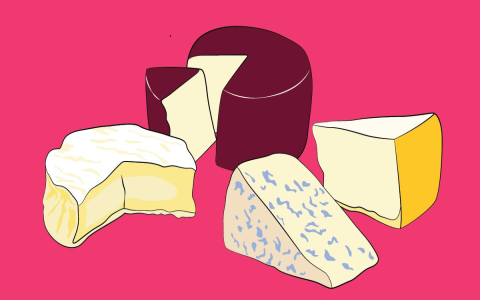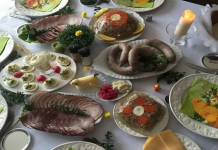Okay, so let’s talk about blue cheese. For the longest time, I wouldn’t go near the stuff. Seriously, just the look of it, those blue veins… nope. My friends would rave about it, especially with wine, and I’d just politely pass. “More for you,” I’d say, secretly thinking they were a bit nuts.

My Blue Cheese Awakening
Then, a few years back, I was at this dinner party. The host, a real foodie, brought out this amazing cheese board. And right there, smack in the middle, was a wedge of something blue. He was so passionate about it, explaining how it was made, the history, all that. I still hesitated, but he cut off a tiny piece, put it on a cracker with a bit of fig jam, and basically dared me to try it. Peer pressure, I tell ya! So, I took a bite. And… it wasn’t horrible. Actually, it was… interesting. Salty, tangy, a bit sharp, but the jam balanced it out. That was the moment I thought, “Huh, maybe there’s more to this blue cheese thing than I thought.”
So, my little adventure began. I decided I was going to explore the world of blue cheese. Not like a scientist, mind you, just a regular person trying to figure things out. My first stop was a decent supermarket with a cheese counter. I stood there, completely clueless. The person behind the counter must have seen the look of utter confusion on my face. I think I mumbled something like, “I want to try blue cheese, but… something not too… aggressive?”
They suggested a Gorgonzola Dolce. Sounded fancy. It was Italian, they said, and milder. So I bought a small piece. Got it home, and very cautiously, tried a tiny bit on its own. It was creamy, definitely blue-cheesy, but not overwhelming. Okay, I thought, I can do this. I paired it with some pear slices, and boom! That was good. The sweetness of the pear and the salty tang of the cheese – a winner.
Next up, I got a bit bolder. I’d heard of Roquefort. French, made with sheep’s milk. This one was a different beast altogether. Strong! Really sharp, salty, and had this powerful, almost spicy kick. My first reaction was, “Whoa, okay, that’s intense!” It wasn’t something I could just nibble on by itself, not at first. But I found it was amazing crumbled into a salad with a vinaigrette dressing. The strong flavor just cut through everything else in a really good way.
Expanding the Blue Horizon
Then I started looking for others. There was Stilton from England. That one was crumbly, but also kind of creamy. It had a strong flavor too, but different from Roquefort – maybe a bit more earthy? I tried it the traditional English way, with a bit of port. Not bad, not bad at all. Felt very sophisticated, even if I was just sitting in my pajamas.

I also stumbled upon Danish Blue (sometimes called Danablu). This one was often cheaper, and I found it quite sharp and salty. Good for cooking, I thought. Melted into a sauce for pasta, or on top of a burger, it added a real punch. Not really my favorite for just eating on a cracker, though. A bit too much of a one-note punch for me at the time.
My exploration went something like this:
- Buy a small piece: Never commit to a giant wedge until you know you like it. Lesson learned the hard way with one particularly pungent fella I can’t even remember the name of.
- Try it plain: Just to get the unadulterated flavor. Sometimes a shock, sometimes a pleasant surprise.
- Experiment with pairings: This was key. Honey, fruits (figs, pears, apples), nuts (walnuts especially), dark bread, crackers. It’s amazing how a good pairing can totally change your perception of a cheese.
- Don’t be afraid to ask: Cheese counter people are usually pretty passionate and happy to give recommendations. They’ve steered me right many times.
Over time, I discovered that blue cheeses vary so much. Some are incredibly soft and spreadable, others are firm and crumbly. The intensity of the “blue” flavor can range from pretty mild and nutty to knock-your-socks-off strong and peppery. It’s all about those Penicillium molds, which sound scary but are actually our friends in the cheese world.
So, after all this tasting and experimenting, am I a blue cheese connoisseur? Heck no. I still can’t pronounce half the names correctly. But I’m not scared of it anymore. I actually enjoy several types now. Gorgonzola, especially the sweeter kind, is a regular in my fridge. And I appreciate the punch of a good Roquefort in the right context. It’s been a fun journey, from being a total blue cheese skeptic to someone who actually looks forward to trying new ones. It just goes to show, sometimes you gotta step out of your comfort zone, even if it’s just in the cheese aisle.










